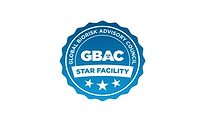A Hands-On Infection Prevention Strategy: Criteria for Selecting the Ideal Disinfectant

Photo credit: izusek/iStock / Getty Images Plus via Getty Images.
Although cleanliness may be next to godliness, it is also very closely related to disinfection. In fact, cleaning can avert the need to disinfect in some situations because clean and dry surfaces cannot harbor microbial growth for very long.
Disinfectants kill microbes. However, depending on the pathogen, preventing the microbes from getting a foothold by removing food and moisture (two essentials for sustaining living organisms) may, in the long-term, be as effective as a chemical disinfectant. In fact, most chemical disinfectants cannot do their job when high levels of organic soil are in the way. Soil can absorb the disinfectant’s active ingredients, provide more places for the germs to hide and possibly change the chemical nature of the disinfectant.
The Two Basic Principles of Cleaning
There are two basic principals in all cleaning: pH and physical removal. Physical removal is one of the best microbial decontamination processes. It lessens the number of pathogens from all surfaces as well as removes the food sources that aid in their growth. If contaminants are removed from a surface, it is no longer possible for them to spread infections.
Physically removing contaminants from surfaces should be the goal of any cleaning procedure. To physically remove contaminants from a surface, it is often necessary to alter their chemical state. This is the pH principle of cleaning.
The guiding principle is always to remove germs, if possible, rather than kill them, and then, use the least amount of the mildest chemical or stronger product that will do the job.
The pH principle of cleaning starts with water. Pure water has a pH of 7. For bacteria to be killed or for many common soils to be removed, their pH needs to be altered. Adding the correct chemical compounds to water may change the pH, aiding in the physical removal process. Depending on the surface, the type of soils present and the required results, using a solution with the correct pH and chemical makeup for the task at hand can make the cleaning process more effective.
Cleaning is removing. We do not hide or brush aside dust and wastes and say we are cleaning. We must remove and dispose of them, too. The CDC’s definition for cleaning refers to the removal of dirt and impurities, including germs, from surfaces. Cleaning alone does not kill germs. But, by removing the germs, it decreases their number and therefore the risk of spreading infection.
Washing or scrubbing a surface physically removes soil and organic material such as blood and body fluids, and takes with it many germs.
The guiding principle is always to remove germs, if possible, rather than kill them, and then, use the least amount of the mildest chemical or stronger product that will do the job, because stronger often means more toxic to people and the environment.
Some people use the terms “cleaning” and “disinfecting” as though they are synonyms. They are not! They are two separate operations. Consumers also read a label on a disinfectant that states the product kills 99.9% of bacteria. By definition, a disinfectant must reduce or eliminate 99.9999% of labeled organisms. Consumers believe that disinfectants and sanitizers are synonymous terms; they are not.
The CDC’s definition for disinfecting works by using chemicals to kill 99.9999% of germs on surfaces. The process does not necessarily clean dirty surfaces or remove germs, but killing germs remaining on a surface after cleaning further reduces any risk of spreading infection.
For an environment to be considered disinfected, we remove or make safe the vast majority (95%) of harmful substances in it. We eliminate the pathogens that are most threatening to humans. A disinfected condition can be achieved, but only with much work.
For an environment to be considered sanitary, we clean it to the point that it protects human health in general, but it still has some contamination. A risk of disease still exists, but it is at an acceptable risk level. At a minimum, cleaning must always achieve a state of “sanitation.” An unsanitary condition poses a likely health risk. The purpose of cleaning is to correct the risky condition. Therefore, if a risk has not been improved to a level we call sanitary, cleaning has not been accomplished.
Selection of the Ideal Disinfectant in 2021 and Beyond
According to public health sources, disinfection uses a chemical to kill germs, while sanitizing reduces but does not kill germs. A further distinction: sanitizers have claims only for bacteria, while disinfectants have claims against both bacteria and viruses.
While no disinfectants specifically include SARS-CoV-2 on the product label, all products on the U.S. Environmental Protection Agency’s (EPA) List N meet the criteria for use against this virus as well as new and emerging pathogens.
The online version of the list contained 535 disinfectants at the time of this writing and can be sorted by EPA registration number found on product labels, brand name and active ingredient; a downloadable spreadsheet version allows additional filtering by use setting (healthcare, institutional, residential) and type of surface to be disinfected. Most products on the list are for use on hard, nonporous surfaces only. The contact time for each product is noted, i.e., the amount of time the surface being cleaned needs to be wet. Note: Surface wipes can dry out during use; they must remain wet to be effective.
To save you time and effort, I have used the following criteria to recommend six disinfectants from the exhaustive list of 535 disinfectants:
- Kill claims for SARS-CoV-2 and for the most prevalent healthcare pathogens. Before COVID-19 reached American shores, over 100,000 patients in hospitals and 400,000 in senior care institutions were dying of healthcare-associated infections. However, since SARS-CoV-2 is the “bug” on every facility’s disinfectant list, that criteria was used for this recommendation.
- Fast kill times of <5 minutes. Five of the six recommended disinfectants have kill times of 30 to 60 seconds, one has a five-minute kill time for SARS-CoV-2. Kill time is a specific length of time it must remain in contact with a micro-organism to achieve complete disinfection. Fast kill times are important because they give you confidence that you are killing the prevalent and most common healthcare-associated pathogens before the disinfection solution can dry.
- Safety reflected in the Hazardous Materials Identification System (HMIS) score. Chemicals on this list have an HMIS rating of 1-0-0 (slight health risk) or 0-0-0 (minimal health risk). One product has the EPA’s Design for the Environment (DfE) which is reserved for products with the least hazardous chemicals for humans and environment.
- Ease of use is another consideration that you should use to evaluate before choosing a disinfectant. Products should be effective in the presence of environmental factors, such as organic matter (i.e., blood), have an acceptable odor profile, be stable, be soluble in water, have simple directions for use and have good cleaning properties. All six disinfectants are easy to use.
Absent from this list of recommended disinfectants are sodium hypochlorite (bleach), peracetic acid, quaternary ammonium compounds, phenolics or alcohol-based products due to their toxicity to humans and the environment as well as their corrosiveness on surfaces. Several of the “families” of disinfectants excluded from recommended disinfectants pose increased risks to adults with asthma in the era of COVID-19. You should purchase cleaners and disinfectants that are minimally hazardous 0-0-0 or 1-0-0. All six of these meet that criterion.

*Click the image for greater detail
Not all microorganisms are harmful, but several of them can cause illness or death — and waste no time multiplying exponentially inside the human body or out. Controlling the growth of harmful microorganisms is vital to health and prevention of infections. If you do your job using these basic principles, you may just save a life. It’s the accident that never happened because you prevented it!
Looking for a reprint of this article?
From high-res PDFs to custom plaques, order your copy today!







